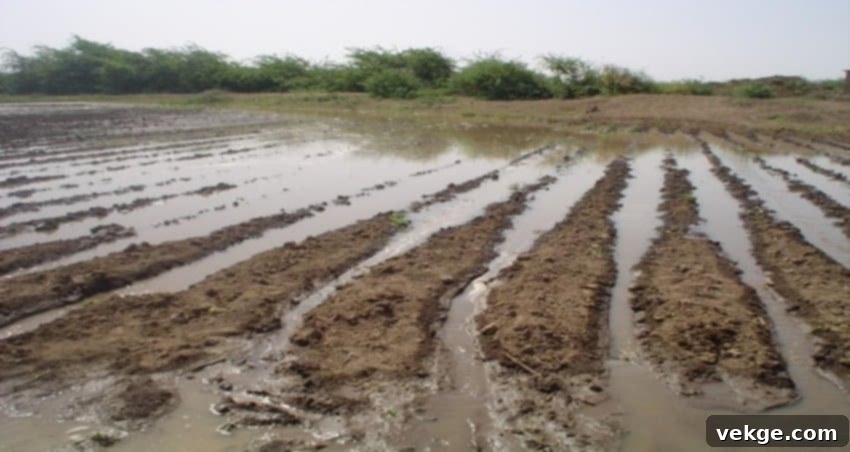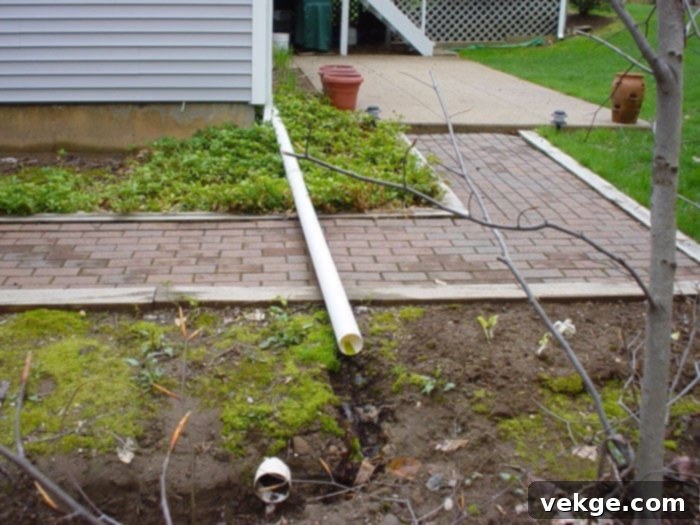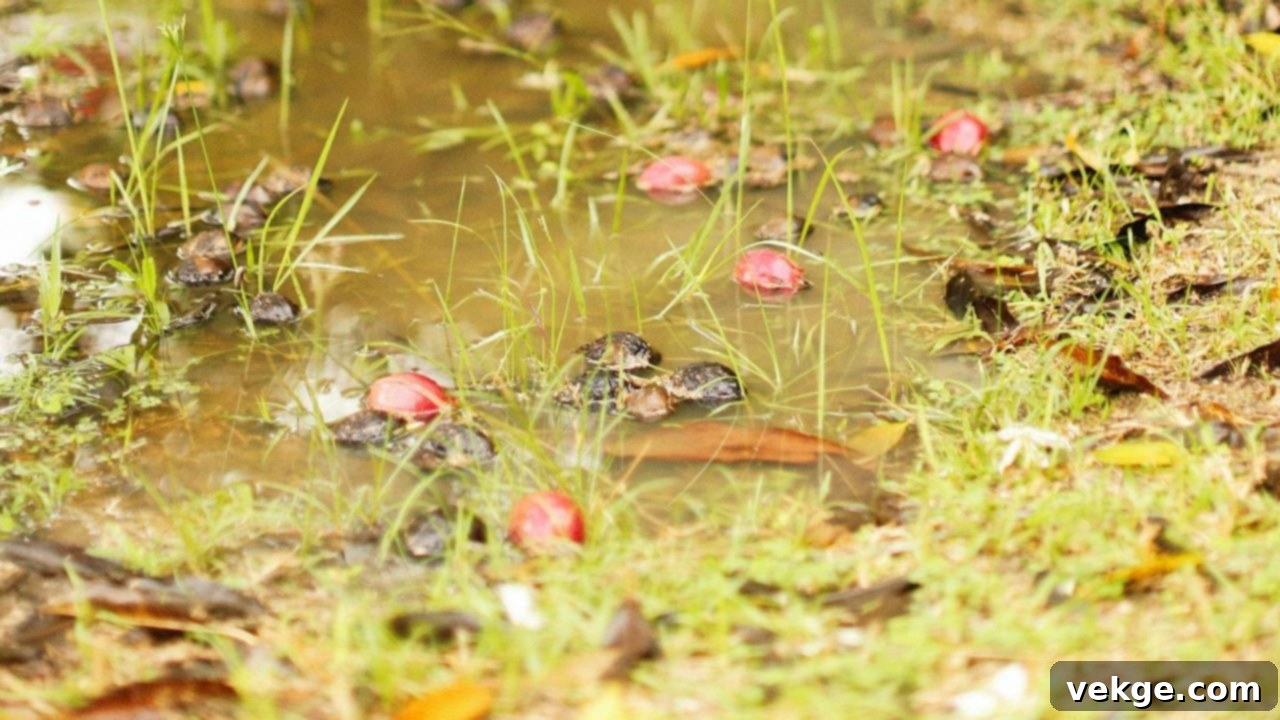Mastering Home Drainage: Essential Solutions to Prevent Water Damage and Protect Your Property
Effective home drainage is a cornerstone of property maintenance, directly impacting the structural integrity of your house and the health of your landscape. Homeowners frequently encounter various drainage issues that, if left unaddressed, can escalate into significant property damage, costly repairs, and even health hazards. Understanding these common problems and implementing timely, effective solutions is crucial for maintaining a functional, aesthetically pleasing, and safe outdoor environment.
This comprehensive guide delves into the most frequent drainage challenges faced by homeowners, offering expert tips, practical tricks, and long-term strategies to tackle them head-on. By understanding the causes and preventative measures, you can proactively protect your investment and ensure your property remains resilient against the elements.
Tackling Standing Water in Your Yard
One of the most visible and frustrating drainage issues is persistent standing water in the yard. This problem not only creates an unsightly lawn but also provides an ideal breeding ground for mosquitoes and other pests, potentially damaging turf and landscaping plants. Standing water often results from poor soil drainage, inadequate grading, or a combination of both.
Causes of Standing Water:
- Compacted Soil: Heavy foot traffic, construction, or naturally dense clay soils can compact the soil, making it difficult for water to penetrate.
- Inadequate Grading: If your yard slopes towards your house or has low spots, water will naturally accumulate in these areas instead of flowing away.
- Hardpan Layers: Sometimes, an impermeable layer of soil beneath the surface prevents water from draining properly.
Solutions for Standing Water:
To effectively address standing water, begin by improving the soil’s drainage capacity. Aerating the lawn is a crucial first step; this process involves removing small plugs of soil, which helps break up compaction, allowing water, air, and nutrients to penetrate the soil more easily. For best results, consider core aeration annually, especially in high-traffic areas or on clay soils. Incorporating organic matter, such as compost, can also significantly improve soil structure over time, enhancing its ability to absorb and drain water.
Another critical aspect is ensuring proper yard grading. The landscape should be subtly sloped away from your home’s foundation (ideally a minimum of 6 inches for every 10 feet) to prevent water from pooling near structures. Regrading might involve adding soil to low areas and compacting it to create a gentle, consistent slope. For more severe or persistent issues, professional landscaping services can help design and implement proper grading. Additionally, installing a French drain or constructing a dry creek bed can effectively redirect excess surface water to a designated, permeable drainage area, such as a rain garden or a street drain. French drains, typically consisting of a trench filled with gravel and a perforated pipe, efficiently collect and channel subsurface water away from problematic areas. Dry creek beds, on the other hand, offer an attractive, natural-looking solution that guides water during heavy rainfall while blending seamlessly into the landscape.
Resolving Waterlogged Soil Issues

Waterlogged soil is more than just a nuisance; it’s a critical problem that can severely impact plant health. Overly saturated soil deprives plant roots of essential oxygen, leading to root rot, stunted growth, and eventually plant death. This issue is particularly prevalent in areas with heavy clay soils or improper irrigation.
Addressing Waterlogged Soil:
To significantly improve soil drainage, the most effective long-term solution is to generously incorporate organic matter. Materials such as well-rotted compost, leaf mold, or aged manure help to break up dense, compacted clay soils, creating larger pore spaces that allow water to percolate more freely. For sandy soils, organic matter improves water retention, preventing rapid runoff. It also enhances beneficial microbial activity, further contributing to a healthy soil structure. Aim to mix 2-4 inches of organic matter into the top 6-12 inches of soil, especially in garden beds.
For areas consistently suffering from waterlogging, raised garden beds offer an excellent alternative. Elevating the planting surface above the natural grade ensures better drainage, as excess water can easily escape from the sides and bottom of the bed. Constructing raised beds allows you to control the soil mixture entirely, filling them with a custom blend of topsoil, compost, and coarse sand for optimal drainage. Adding a layer of gravel or coarse sand at the very base of a raised bed can further enhance drainage, acting as a sub-drainage layer to prevent the bottom from becoming saturated. This method provides a healthier and more manageable environment for plants that are sensitive to excessive moisture, ensuring their roots receive adequate oxygen.
Preventing Basement Flooding
Basement flooding is perhaps one of the most dreaded drainage issues for homeowners, often leading to extensive damage to personal belongings, structural components, and creating conditions ripe for mold growth. It primarily stems from inadequate exterior drainage systems that fail to channel water effectively away from the house foundation.
Key Prevention Strategies:
The first line of defense against basement flooding involves meticulous maintenance of your gutters and downspouts. Clogged gutters overflow, allowing water to cascade directly down your foundation walls. Regularly cleaning gutters of leaves, twigs, and debris—ideally twice a year, or more frequently if surrounded by many trees—is paramount. Ensure your downspouts are properly extended to discharge water at least five feet away from the foundation. Splash blocks or rigid downspout extensions are simple yet effective tools for this. Redirecting water into underground drainage pipes connected to a storm drain or a dedicated dry well can provide an even more robust solution.
For properties prone to heavy rainfall or with existing water issues, installing a sump pump in the basement provides crucial additional protection. This device automatically pumps out water that accumulates in a designated sump basin, preventing it from rising and flooding the basement floor. Modern sump pumps come with features like battery backups, ensuring continued operation during power outages. According to Chicago drainage experts – Warelandscaping, sump pumps are indeed essential for properties susceptible to significant rainfall. Regular testing and maintenance of your sump pump are vital to ensure it’s functional when you need it most. Beyond these measures, consider inspecting your foundation for cracks and ensuring proper sealing, and evaluating your landscaping for proper grading as discussed previously, as these are all interconnected factors contributing to basement dryness.
Combating Erosion Issues

Erosion is a destructive force that can degrade landscapes over time, leading to significant loss of topsoil, damage to plants, and even structural instability for nearby elements. This problem typically arises in areas with steep slopes, where concentrated water flows rapidly, or where vegetation is sparse. Preventing erosion is key to maintaining a healthy and stable landscape.
Effective Erosion Control:
To combat erosion, one of the most effective strategies is planting dense ground cover vegetation. Plants with extensive, fibrous root systems act as natural anchors, holding the soil in place and significantly reducing the risk of soil particles being washed away by rain or wind. Native grasses, creeping junipers, Vinca minor, and various sedums are excellent choices for their resilience and ability to establish quickly. When establishing new plantings on slopes, erosion control blankets or jute netting can provide temporary protection while the plants get established.
For steeper slopes, more robust solutions are often necessary. Building terraces can effectively break up a long, continuous slope into a series of smaller, level platforms. This not only prevents soil from washing away but also creates stable, level planting areas, making gardening on a slope much more manageable. Retaining walls, constructed from materials like timber, stone, concrete blocks, or gabions, add structure and stability to the landscape. They effectively hold back soil, reducing runoff speed and creating defined, level zones. Incorporating a thick layer of mulch into garden beds and around plants also plays a vital role in protecting soil from erosion. Mulch covers the soil, shielding it from the direct impact of raindrops and slowing down surface runoff. Additionally, it helps retain soil moisture, suppresses weeds, and gradually enriches the soil as it decomposes.
Preventing and Clearing Clogged Drains
Clogged drains, whether they are part of your gutter system, downspouts, or underground French drains, can cause water to back up, leading to standing water, overflow, and potential flooding. Regular upkeep of all drainage systems is absolutely essential to prevent these troublesome blockages.
Maintenance for Clear Drains:
Proactive maintenance is the best defense against clogs. Make it a routine to inspect and clean your gutters and downspouts periodically, especially in autumn after leaves have fallen and in spring after winter debris. Remove leaves, twigs, shingle grit, and any other debris that can accumulate. Installing gutter guards can significantly reduce the frequency of clogs by preventing large debris like leaves from entering the gutter system. Various types of gutter guards exist, including mesh screens, solid covers, and fine filters, each with their own advantages and maintenance requirements.
For French drains and other underground drainage pipes, ensure that the gravel layer remains clear of silt and that the perforated pipes are unobstructed. Over time, fine soil particles or even plant roots can infiltrate and block these systems. Periodically flushing the system with a strong stream of water from a garden hose can help clear minor blockages and keep the pipes clean and functional. If you suspect a severe clog or root intrusion in underground pipes, it might be necessary to consult a professional drainage expert who can use specialized equipment, such as hydro-jetting, to thoroughly clean and restore the system’s efficiency. Regular visual inspections of drain outlets for signs of blockage or slow drainage are also highly recommended.
Correcting Poor Grading Around Your Home

Poor grading is a fundamental drainage flaw that directs water toward the home rather than safely away, leading to a cascade of problems including foundation damage, basement flooding, and compromised structural integrity. Correcting grading issues is paramount for long-term property protection and improving overall landscape aesthetics.
Strategies for Proper Grading:
The core principle of proper grading involves reshaping the landscape to create a subtle but consistent slope that guides water away from your home’s foundation. A commonly recommended guideline is to achieve a slope of at least 6 inches for the first 10 feet extending from the foundation. This ensures that rainwater and snowmelt naturally flow away, preventing accumulation and hydrostatic pressure against your basement walls. This process typically involves adding fill soil to low areas near the foundation and compacting it to create a stable, outward-sloping surface.
In addition to general regrading, installing swales, or shallow, wide ditches, can significantly help manage and redirect water flow. These landscape features are designed to collect and channel excess runoff to appropriate drainage areas, such as a rain garden, a dry well, or the street, preventing it from pooling around the house. Swales can be beautifully landscaped with grasses, permeable rocks, or other suitable plants to blend seamlessly and attractively into your yard, functioning as both a drainage solution and an aesthetic element. For hardscapes or very specific areas, the installation of channel drains can also provide targeted water collection and redirection, connecting to your main drainage system.
Addressing Poor Drainage in Paved Areas
Paved areas such as driveways, patios, and walkways are often impermeable surfaces that can exacerbate drainage issues if not correctly designed. Water can accumulate on these surfaces, leading to unsightly puddles, slippery conditions, and potential damage to the paving material itself, as well as adjacent structures.
Solutions for Paved Area Drainage:
One of the most innovative solutions for paved areas is the use of permeable paving materials. Unlike traditional concrete or asphalt, materials such as permeable pavers, porous concrete, or gravel grids allow water to pass through their surface and slowly soak into the ground below. This significantly reduces surface runoff, minimizes puddling, and helps replenish groundwater. Permeable paving is an excellent eco-friendly choice for driveways and patios, providing both functionality and environmental benefits.
For existing impermeable paved areas, ensuring a proper slope is crucial. Driveways and patios should be designed with a slight pitch (typically 1-2%) to direct water away from the house and towards a designated drainage point. Installing discreet drains or channels along the edges of driveways or patios can effectively capture runoff. These systems, often connected to a larger underground drainage network or a French drain, prevent water accumulation and mitigate potential damage to both the paved surface and nearby foundations. Catch basins with grates can also be strategically placed in low spots within paved areas to collect water efficiently. Regular cleaning of these drains is essential to ensure they remain free of debris and continue to function effectively.
Taking Control of Your Landscape Drainage Issues
Addressing common landscape drainage problems promptly is not just about convenience; it’s a vital investment that can save homeowners from extensive property damage, costly repairs, and potential health hazards. Implementing proactive and effective solutions, such as improving soil drainage through aeration and organic matter, correcting landscape grading, installing efficient drainage systems like French drains or sump pumps, and utilizing erosion control measures, ensures your property remains functional, safe, and visually appealing.
Regular maintenance and vigilant proactive measures are key to preventing drainage issues from escalating. By routinely inspecting gutters, cleaning drains, monitoring soil conditions, and making necessary adjustments, you can stay ahead of potential problems. Embracing these expert tips and tricks empowers you to create a resilient, well-drained landscape that not only withstands the challenges of varying weather conditions but also enhances your property’s value and provides a beautiful, functional outdoor space for years to come. Protecting your home starts from the ground up, and effective drainage is the foundation of that protection.
